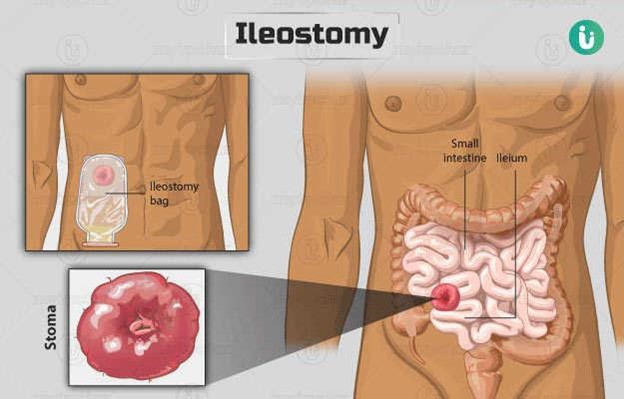When performing an assessment, the nurse observes for bilateral equality. After performing a neurological assessment, which of the following will the nurse document when assessment findings indicate that there is left facial droop?
Inability to perform within normal limits
Symmetrical findings
Asymmetrical findings
Bilateral strength present
The Correct Answer is C
Choice A Reason: This choice is incorrect. Inability to perform within normal limits is a vague and general term that does not describe the specific finding of left facial droop. The nurse should document the exact observation and compare it to the expected or normal range.
Choice B Reason: This choice is incorrect. Symmetrical findings mean that both sides of the body or face are equal or similar in appearance or function. Left facial droop indicates that one side of the face is lower or weaker than the other, which is not symmetrical.
Choice C Reason: This is the correct choice. Asymmetrical findings mean that both sides of the body or face are unequal or different in appearance or function. Left facial droop indicates that one side of the face is lower or weaker than the other, which is asymmetrical.
Choice D Reason: This choice is incorrect. Bilateral strength present means that both sides of the body or face have normal or adequate muscle power or force. Left facial droop indicates that one side of the face has reduced or impaired muscle power or force, which is not bilateral strength present.
Nursing Test Bank
Naxlex Comprehensive Predictor Exams
Related Questions
Correct Answer is D
Explanation
Choice A Reason: This is incorrect because intestinal obstruction is not a common complication of ileostomy surgery. An ileostomy is a surgical opening in the abdomen that connects the end of the small intestine (ileum) to a pouch or bag outside the body. This allows stool to bypass the colon and rectum. Intestinal obstruction can occur if there is a blockage or narrowing in any part of the digestive tract, but it is more likely to affect the colon than the ileum.
Choice B Reason: This is incorrect because folate deficiency is not a common complication of ileostomy surgery. Folate is a vitamin that is essential for DNA synthesis and cell division. Folate is mainly absorbed in the jejunum, which is the middle part of the small intestine. An ileostomy does not affect the jejunum, so it does not interfere with folate absorption.
Choice C Reason: This is incorrect because malabsorption of fat is not a common complication of ileostomy surgery. Fat is digested and absorbed in both the small and large intestine. An ileostomy does not affect fat digestion, but it may reduce fat absorption by decreasing the transit time and surface area of the intestine. However, this is usually not significant enough to cause malabsorption symptoms.
Choice D Reason: This is correct because fluid and electrolyte imbalance is a common complication of ileostomy surgery. Fluid and electrolytes are mainly absorbed in the colon, which is bypassed by an ileostomy. This can result in increased fluid and electrolyte loss through stool, especially sodium and potassium. This can lead to dehydration, hypotension, weakness, cramps, or arrhythmias.

Correct Answer is C
Explanation
Choice A Reason: This is incorrect because rotating nursing staff may not provide emotional support for the client who is rehabilitating from major burns. The client may benefit from having consistent and familiar staff who can establish rapport and trust with him. The nurse should assign staff who are experienced and comfortable with burn care and who can communicate effectively and empathetically with the client.
Choice B Reason: This is incorrect because keeping family members aware of his condition may not provide emotional support for the client who is rehabilitating from major burns. The client may have privacy or confidentiality concerns or may not want his family members to see him in his current state. The nurse should respect the client's wishes and preferences regarding family involvement and obtain his consent before sharing any information.
Choice C Reason: This is correct because talking with the client during wound care can provide emotional support for the client who is rehabilitating from major burns. Wound care can be painful and stressful for the client, so the nurse should use therapeutic communication skills to distract, reassure, and encourage him. The nurse should also explain the procedures and rationale for wound care and allow the client to express his feelings and concerns.
Choice D Reason: This is incorrect because assigning assistive personnel to keep his room neat and clean may not provide emotional support for the client who is rehabilitating from major burns. The client may appreciate a clean environment, but he may also need more direct and personal contact with the nurse. The nurse should spend time with the client and provide holistic care that addresses his physical, psychological, social, and spiritual needs.
Whether you are a student looking to ace your exams or a practicing nurse seeking to enhance your expertise , our nursing education contents will empower you with the confidence and competence to make a difference in the lives of patients and become a respected leader in the healthcare field.
Visit Naxlex, invest in your future and unlock endless possibilities with our unparalleled nursing education contents today
Report Wrong Answer on the Current Question
Do you disagree with the answer? If yes, what is your expected answer? Explain.
Kindly be descriptive with the issue you are facing.
